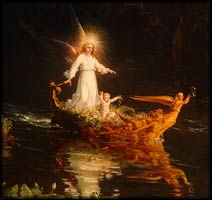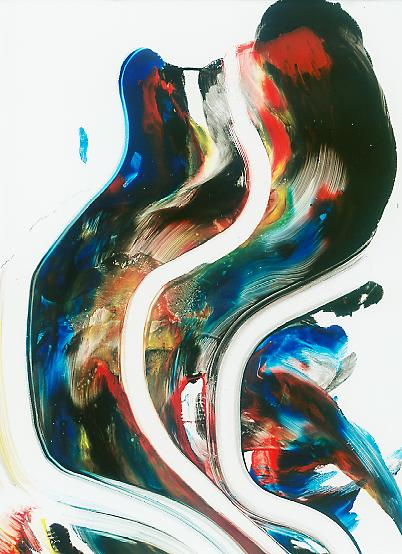Introduction
It is clear many people do not understand the real definition of post-modernism. Notably, there exist two groups of people; one that believes the term has definition and the other one, which believe that the term is indefinable. This has resulted into intelligent conversations, which end up confusing people even more.
Nevertheless, it is imperative to understand the definition of modernism before defining post-modernism. This is because many people believe that post-modernism is something new and innovative to modernism. To start with, many scholars refer modernism as the era of western artistic, cultural and sociological narration ranging from late nineteenth century to early twentieth century.
This period saw major development in western countries in terms of thinking and worldview. The foundation of modernism dates back during the First World War when European powers introduced modern technology, rolling tanks and planes. This led to an alteration of perceptions (Smith p.1).
Post-Modernism
Since post-modernism is a broad word with diverse meanings, we can define it in three different versions. Firstly, post-modernism is a predisposition in the present-day culture typified by the denunciation of customary happenings and instead, embracing new ideologies. In most cases, post-modernism accentuates the use of language and motivations to build an intelligent conversation. Secondly, we can define post-modernism as an aftermath of modernism.
Lastly, postmodernism, is a refutation of the sovereign autonomous personality and instead, embracing a new dimensional experience different from the past. Thus, post-modernism involves multiplicity and generation of new ideas to create new attentions. Numerous happenings in the fields of art, philosophy, science, music, and critical theory explain the meaning of post-modernism (Keep, McLaughlin and Parmar p.1).
Although majority of people believe that post-modernism is a continuation of modernism, it turns out that the two are different. For instance, in arts and literature, the two differ in that whereas modernism issues that are against classical concepts, post-modernism draws conclusions of those issues.
Thus, post-modernism provides a nihilistic viewpoint on the preexisting meaning of a particular sphere, say art. Sigurdur argues that modernism is all about basic principles such as individuality, authority, unison and conviction, while post-modernism acquaintances itself with skepticism, plurality, and distinction (pp. 701-722).
Post-modernism is the same as modern art due to the production of new pieces. For example, there is a tremendous change in creative disciplines with the use of kitsch and other simplistic styles that did not exist in the era of modernism. Notably, post-modern artists use modern and classical works to create new and modified ironic pieces-post modern art.
For instance, in literature, and particularly in postmodern theatre, artists break the conventional barriers that exist between the raconteur and the audience. Thus, unlike modernism, post-modernism promote vitality and vigor into art to make it appear modern. For example, in a novel, the postmodern writer tries as much as possible to create self-awareness, which will assist the character to play designated roles effectively.
Perhaps this is the reason why many postmodern artists believe that the self-aware irony forms the foundation of post modernism art. Postmodernism also plays an imperative role when it comes to critical theory and philosophy. For example, it breaches the gap between classical and modern aspects of philosophy aimed at adding value.
Through this, people can depict meaning of certain philosophical themes and make form collective worldview. In the branch of postmodern architecture, postmodern art exhibit by converting traditional architectural designs into modern designs by exchanging the exterior with the interior. In addition, such designs may encompass symbolic elements placed strategically to emphasize strident and dissonant aesthetics (Hurd p.1).
Postmodern art involves painting, sculpture, drama, literature, architecture and music. Nevertheless, one of its dominant features is the absence of depth and meaning although full of content and diversity forms. Postmodern architecture has rejuvenated most cities all over the world.
Other postmodern art features include pop music and adverts. The media industry has been at the forefront in unleashing postmodern art. With the emergence of films and television, everything is now a reality. In postmodern art, every artist creates an artwork that reflects personal practice, style, connotation and mythology. Among the many examples of works of modern art, include pop art, hyperrealism, photorealism, political realism, neo-expressionism and new image painting (Lyotard pp. 2-16).
Pop Art

Hyperrealism
This postmodern art genre involves painting and sculpture with an aim of high-resolution photographs. It adds fantasy to the traditional photos to form new paintings and sculpture.

Photorealism
This work of modern art involves the use of a camera and photographs to assemble information, and later using it to generate paintings that appear similar to photographs. A god example is the picture shown below painted in United States in the late 1960s (Chase pp. 12-15).

Allegorical and Political Realism
Another work of modern art is allegorical and political realism. It seeks to give more explanation on particular representations in addition to its literary meaning. For instance, an artist can create a Stature of Liberty like the one elected in Washington, USA of a female person wearing a crown and on her hand is a torch; in allegorical and political realism, this artwork symbolizes the notion of liberty.
Neo Expressionism
This work of modern art became dominant in 1970s following controversies surrounding conceptual art and minimalism. They represent violent emotions on controversial topics under discussion.
Characteristics of Post-Modern Theories and Aesthetics
Many postmodern artists agree that there is a difference between modernism and postmodernism. The postmodern theory has numerous characteristics that assumes different styles and at the same time, investigates various themes and ideas across all artistic disciplines. Among the many characteristics of postmodern theories and aesthetics is the use of materials, forms and themes to create postmodern artworks.
These theories and aesthetics characterize with societal and cultural ideals and traditions acceptable across board. In addition, they comprise of concepts of reductionism as used in modern art but now representing different scenario. Postmodern theories characterize with contradictions and diversity in order to unseat theories of modernism.
Full of eclecticism, these post-modern theories and aesthetics snub genre boundaries in order to welcome new ideas. Moreover, postmodern theories and aesthetics encompass irony, playfulness and burlesque to entertain the audience. In most cases, many postmodern artworks appear fragmented hence, contrasting modern art theories (Boje p.1).
Post-Modern Art as a Form of Anti-Modernism
Many people believe that modernism has failed many enterprises hence, the need of having a new approach. In modernism, everything became flawed, oppressive and corrupt prompting people to look for new ideologies. Eventually, people changed their worldview to embrace postmodernism instead of modernism. Post-modernism castoffs the tenets of modernism, that is, denouncing the old traditions of modernism like supremacy of reason, believe that man is perfect and truth notions in order to create a better society.
This is the reason why many people see post-modernism as anti-modernism. Postmodernism does not discard the tenets of modernism but instead, it modifies the premises and theories of modernism. In conclusion, the works of modern art reveal post-modernism as anti-modernism where artists create new artworks that pin down those of modernism (Witcombe p.1).
Works Cited
Boje, David. What is Critical Postmodern Theory? 2001. Web.
Chase, Linda, Photorealism at the Millennium. The Not-So-Innocent Eye: Photorealism in Context. New York: Harry N. Abrams, Incorporation. 2002. Print.
Hurd, Wesley Postmodernism. 1998. Web.
Keep, Christopher, McLaughlin, Tim and Parmar, Robin. Defining Postmodernism. 2000. Web.
Lyotard, Jean-Francoise. The Postmodern Condition: A Report on Knowledge. University of Minnesota Press. 1985. Print.
Sigurdur, Magnusson. The Singularization of History: Social History and Microhistory within the Postmodern State of Knowledge. Journal of Social History, 36(3), 2003, 701-735.
Smith, Gary. What is the Definition of Post-Modernism? 2002. Web.
Witcombe, Christopher. ART & ARTISTS: Modernism and Postmodernism. Web.